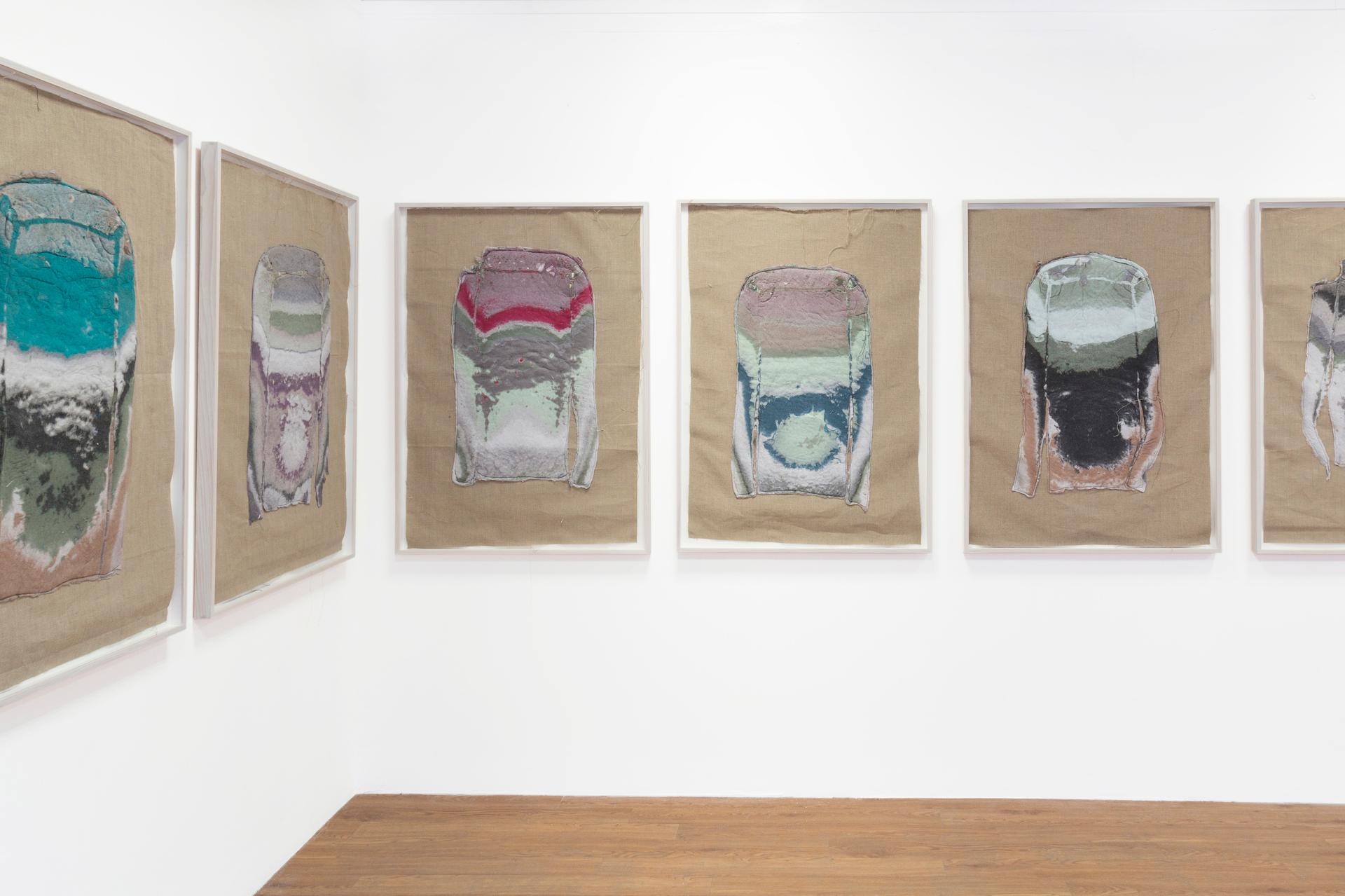
exhibitionSara BermanMatter out of Place03.10—19.10.201893 Baker Street
11:00am—6:00pm93 Baker Street
It is something rejected from which one does not part, from which one does not protect oneself as from an object. (...) It is thus not lack of cleanliness or health that causes abjection but what disturbs identity,
system, order. Julia Kristeva
There is an unprecedented struggle for unity and mutuality in this epoch of singularity and individualism. The biblical precedes these secular ideals in the myth of Babel, with its human element inevitably failing into disparity, not just of language but also of socio-cultural context for its collective ambitions would become its primary sin. Surrounded by divergent, fluctuating value systems, Sara Berman has selected the lowest common denominator of mankind as the focal point of her work, as an uncanny, debased catalyser in her line of artistic inquiry: 'waste'. A propensity for textiles has perhaps indicated Berman in the direction of lint, of drying machine filters, which despite her minimal intervention, do not draw one
immediately towards the abject nature of the piece, but rather ensue an auratic dialogue guided by their anthropomorphic quality and vivid stratigraphy. This 'matter out of place', waste in the form of the work of
art (the commodity par excellence) comes to embody the term derived from Mary Douglas's seminal study on dirt, not just literally, but through the very internal logic of the works. Not only are the fabric remnants dislocated from their status as superfluous objects, framed and exhibited within the gallery space, but in her attempt to generate discourse Berman has created an art object resistant and adhering to any nomenclature, while circumventing any positive or negative valences. The works find themselves in a latent state; perhaps even one of paradox for an initial reaction might contravene a subsequent one upon finding out the medium. From breaking her own dyer at home, to her latter exploration of London
drycleaners, from the first attempts of gathering the lint in large bags to then attaching it to furniture, Berman has redacted her process of making to reduce the infliction of her will upon the work as much as possible. This however has not created a ready-made, for the immediacy of deskilling is
replaced by a careful subtraction, while the unique makeup of the works would have them tangential to artisanship. Berman selects the lints from the filters (very few of which present this distinctive layering) and stiches them to pieces of linen without seeking precision. There is an inexhaustible web of socio-economic relations, which each wool fibre or hair follicle has traversed and can further generate through their repurposing in the lint figures. It is perhaps not coincidental that some of these should have a convex, circular geometry, occurring in the inferior parts evoking thus the maternal or the fertile. The human dimension of the works would have it operate like an artefact, even more so now that the
pieces are exhibited framed for the first time, an equalizing procedure to stress their organic, biological aspect. There is only an illusion of uniformity as each work is entirely distinct in its 'genetic composition'
while any separation occurs as an auxiliary, as our own imposed estrangement from it. Berman has removed the glass dividing the viewer from the 'abject', facilitating either confrontation or familiarization, in
either circumstance permitting a direct exchange. The rug outside invites one into the gallery space while simultaneously deconstructing its boundary, playing into the idea of domesticity as a percept for belonging
and safety while including the nomadic. Berman's inquiry extends into the exterior realm, the question remains, is it art, a handful of hair and lint from the local drycleaners or simply matter... out of place?
Text by Smaranda Ciubotaru



